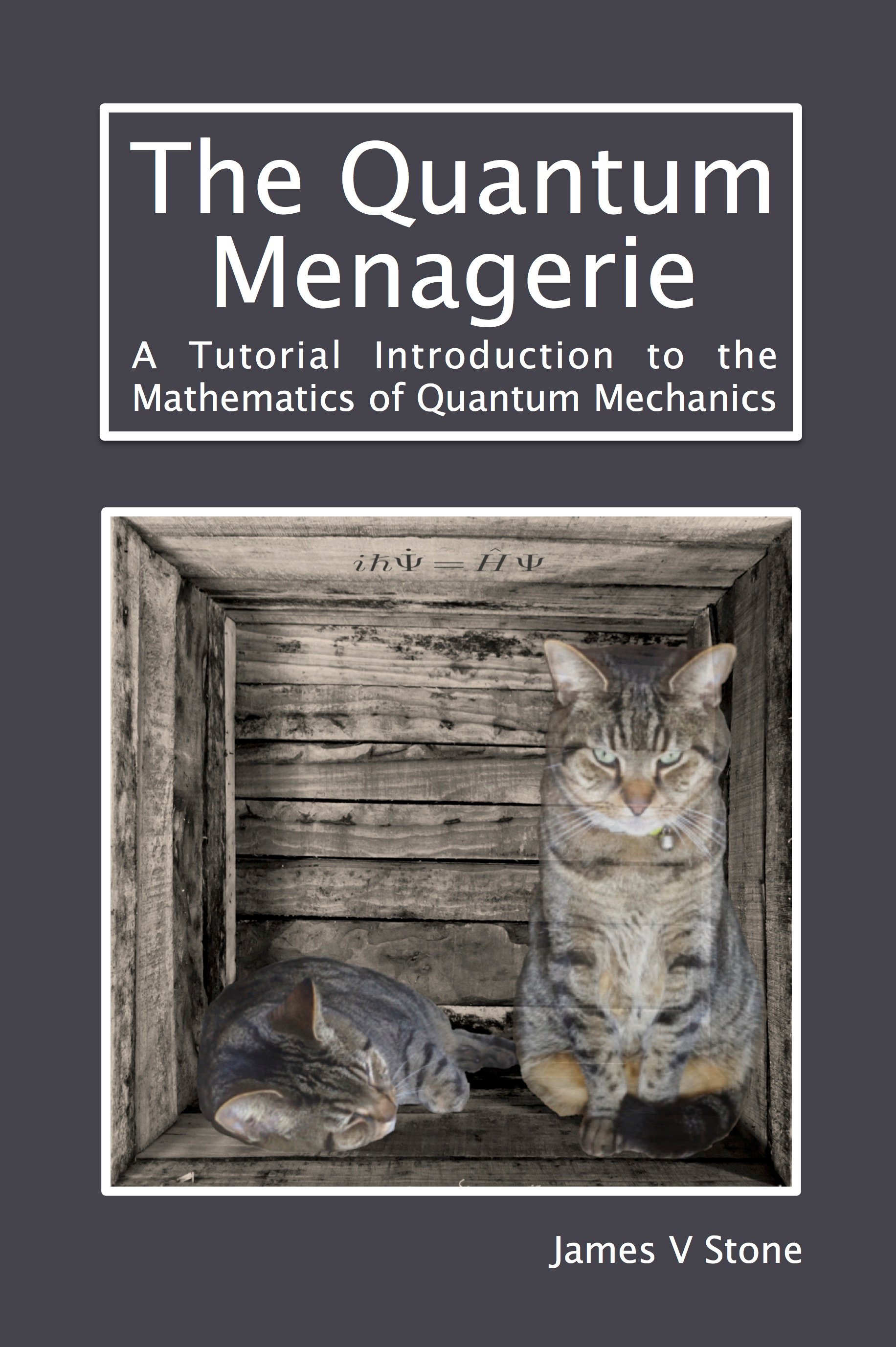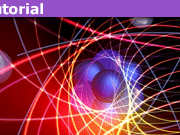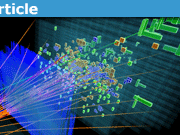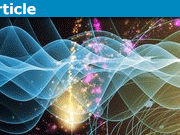Quantum Mechanics and the Famous Double-slit Experiment
Table of Contents
Double-slit Key Points
- Quantum mechanics is known for its strangeness, including phenomena like wave-particle duality, which allows particles to behave like waves.
- The double-slit experiment is a key demonstration of this duality, showing that even single particles, like photons, exhibit wave-like behavior.
- When the experiment measures which slit a particle goes through, it behaves like a particle. When this measurement is not made, it exhibits interference patterns typical of waves.
- Heisenberg’s uncertainty principle plays a crucial role, in connecting the accuracy of position measurement to particle momentum.
- De Broglie’s proposal of matter waves suggests that all matter, not just light, exhibits wave-like properties.
- Wheeler’s delayed-choice experiment demonstrates that deciding what to measure after a particle has passed through the slits can affect its behavior, effectively rewriting the past.
- This temporal editing could theoretically reach back to the beginning of the universe, the Big Bang.
- The interpretation of quantum phenomena like this varies, and physicists may have differing views on the implications of these experiments.
Introduction
Quantum mechanics is famously strange. But Schroedinger’s dead and alive cat, Einstein’s spooky action at a distance, and de Broglie’s matter waves are mere trifles compared to the greatest strangeness: quantum mechanics can be used to edit events that should have already happened; in other words, to re-write history. However, before we can understand how this is possible, we first need to know how Heisenberg’s uncertainty principle accounts for wave-particle duality in the double-slit experiment.
The Double-Slit Experiment
The double-slit experiment is famous because it provides an unequivocal demonstration that light behaves like a wave. But the importance of the double-slit experiment extends far beyond that demonstration because, as Richard Feynman said in 1966:
In reality, it contains the only mystery…In telling you how it works, we will have to tell you about the basic peculiarities of all quantum mechanics.

Figure 1: The double-slit experiment. Waves travel from the source (top) until they reach the first barrier, which contains a slit. A semi-circular wave emanates from the slit until it reaches the second barrier, which contains two slits. The two semi-circular waves emanating from these slits interfere with each other, producing peaks and troughs along radial lines that form an interference pattern on a screen (bottom).
Based on work first described by Young in 1802, the experimental apparatus consists of two vertical slits and a screen, as shown in Figure 1. The light emanating from each slit interferes with light from the other slit to produce an interference pattern on the screen. This seems to prove that light consists of waves, even though the only entities detected on the screen are individual particles, which we now call photons. The bright regions in the interference pattern correspond to areas where photons land with high probability and the dark regions to areas where photons land with low probability.

Figure 2: Emergence (a→d) of an interference pattern in a double-slit experiment8, where each dot represents a photon. Reproduced with permission from Tanamura (Wikimedia).
Remarkably, the same type of interference pattern is obtained even when the light is made so dim that only one photon at a time reaches the screen, as shown in Figure 2. With such a low photon rate, it can take several weeks for the interference pattern to emerge. However, the very fact that an interference pattern emerges at all implies that even a single photon behaves like a wave. This, in turn, seems to imply that each photon passes through both slits at the same time, which is nonsense. Only a wave can pass through both slits, but only a photon can hit a single point on the screen. However, this single-photon interference behavior is not the most remarkable feature of the double-slit experiment.
If a light detector is used to measure which slit each photon passes through then the interference pattern (shown in Figures 2d and 3b) is replaced by a diffraction envelope (shown in Figure 3a) as if the light consists of two streams of particles which spread out and merge over time.

Figure 3: The double-slit experiment can produce either (a) a broad diffraction pattern, or, (b) an interference pattern. Here, the height of the curve indicates light intensity. This also shows how probability density evolves over distance after photons pass through two slits19. (a) If slit identity (photon position) is measured then the waves from the two slits do not interfere with each other. (b) If slit identity is not measured then the waves from the two slits produce an interference pattern as they travel further from the slits. For display purposes, the distribution at each distance has a unit height.
Crucially, a diffraction envelope is exactly what is observed if the waves from different slits are prevented from interfering with each other. This can be achieved by using a photographic plate to record photons as the first slit is opened on its own, and then the other slit is opened on its own. In this case, the image captured by the photographic plate is the simple sum of photons from each slit (i.e. a diffraction envelope), with the guarantee that photons from the two slits could not possibly have interfered with each other. Thus, we can choose to use a light detector to find out which slit each photon passed through, but as soon as we do this, we see a diffraction envelope instead of an interference pattern.
Despite many ingenious experiments, any attempt to ascertain which slit each photon passed through forces the light to stop behaving like a wave (which yields an interference pattern) and to start behaving like a stream of billiard balls (which yields a diffraction envelope). The transformation from wave-like behavior to particle-like behavior is intimately related to Heisenberg’s uncertainty principle, as explained below. However, even this wave-particle duality is not the most remarkable feature of the double-slit experiment.
Matter Waves
If the light is replaced by a beam of electrons then an interference pattern is obtained, as if the electrons were waves (which looks like Figure 2d). This is especially surprising because only a few years before this result was obtained in 1927, electrons were thought to behave exactly like miniature billiard balls. So, just as light can be forced to behave like billiard balls, electrons can be forced to behave like waves.
The radical idea that electrons could behave like waves was proposed by de Broglie (pronounced de Broil) in 1923. De Broglie made the far more radical proposal that all matter has wave-like properties, now referred to as matter waves. Since that time, the double-slit experiment has been used to demonstrate the existence of matter waves using whole atoms and even whole molecules of buckminsterfullerene (each buckminsterfullerene molecule is about 1 nanometre in diameter and contains 60 carbon atoms).
But I digress, so let’s return to the subject at hand.
Did the Photon Pass-Through One Slit or Two?
The problem is that a photon (or a molecule of buckminsterfullerene), unlike a wave, cannot pass through both slits, which raises the question: did the photon pass through only one slit, and if so, which one?
To attempt to answer this question, consider what happens if we replace the screen with an array of long tubes, each of which points at just one slit, as shown in Figure 4a. At the end of each tube is a photodetector, such that any photon it detects could have come from only one slit. Note that there should be a pair of detectors at every screen position, with each member of the pair pointing at a different slit. Thus, irrespective of where a photon lands on the screen, the slit from which it originated is measured.
If we were to use this imaginary apparatus then we would find that the distribution of photons is a diffraction envelope, as in Figures 3a and 4a. Crucially, this envelope is identical to the pattern that would be obtained if the slits were opened one at a time, as described above.

Figure 4: An imaginary experiment for demonstrating wave-particle duality. a) If slit identity (photon position at the barrier) is measured using an array of oriented detectors at the screen then momentum (direction) precision is reduced, and a diffraction envelope is observed on the screen, as here and in Figure 5.9a. b) If slit identity is not measured then the screen is allowed to measure direction (photon momentum) with high precision, so an interference pattern is observed, as here. In Wheeler’s delayed-choice experiment, we decide to measure either a) slit identity, or b) photon momentum, but the decision is made after the photon has passed through the slit(s).
Thus, using detectors to measure each photon’s slit identity (i.e. which slit the photon passed through) prevents any wave-like behavior, just as if each photon had traveled in complete isolation as a single particle. If both slots are left open (and no photodetectors are used) then the original interference pattern is restored, as if the individual photons behave like waves (as in Figures 3b and 4b). This is the famous wave-particle duality.
Heisenberg’s Uncertainty Principle
As counter-intuitive as the result above seems, it is consistent with Heisenberg’s uncertainty principle. This ensures that when the slit identity is not measured, uncertainty in the particle’s screen position is roughly equal to the distance between successive maxima in the interference pattern (i.e. it is of the same order of magnitude as the width of each bright region in Figure 1).
More generally, Heisenberg’s uncertainty principle guarantees that any reduction in the uncertainty in slit identity (position at the barrier) must increase uncertainty in the momentum of photons as they exit the slits; because momentum includes direction, uncertainty in momentum translates to uncertainty in screen position. This is the famous position-momentum trade-off traditionally associated with Heisenberg’s uncertainty principle, where position indicates slit identity and momentum indicates screen position here (i.e. position-momentum uncertainty translates to slit identity-screen position uncertainty in the double-slit experiment).
Heisenberg’s uncertainty principle means that, in practice, it is possible to adjust the amount of information gained regarding position by varying the accuracy of the measurement devices. As more position information (slit identity) is gained, less information on the fine structure of the interference pattern is available. Consequently, as more information about the position is gained, the interference pattern is gradually replaced by a broad diffraction envelope.
As an aside, Heisenberg explained his uncertainty principle by showing that shining a light on an electron must alter the position and momentum of that electron, which therefore introduces uncertainty in the electron’s position and momentum. However, Heisenberg’s uncertainty principle does not depend on the uncertainty of measurements (in fact, it is the other way around). Because both light and matter behave as if they are waves, they can be analyzed using Fourier analysis. And if position and momentum are waves then they must obey a key result from Fourier analysis: Heisenberg’s inequality. Speaking very loosely, this states that if position wavelengths are long then momentum wavelengths are short, and vice versa. More precisely, Heisenberg’s inequality implies that reducing position uncertainty increases momentum uncertainty (and vice versa) so that the values of both cannot be known exactly, independently of whether or not they are measured.
Wheeler’s Delayed-Choice Experiment
So far, we have chosen to measure two different aspects of each photon: first, by measuring each photon’s position on the screen (which translates into momentum at a slit; see the previous section); and second, by using tube detectors to measure which slit each photon came from (which translates into the photon’s position at the barrier).
When measuring photon position, the experimental setup does not change over time, so it seems plausible (or at least acceptable) that each photon could have passed through both slits. Similarly, when measuring slit identity, it seems plausible that each photon passes through only one slit.
But there is an alternative experiment, which involves changing the experimental setup while each photon is in transit between the slits and the screen. If what we choose to measure alters how each photon behaves then it seems reasonable that we must make this decision before each photon reaches the slits. However, what if the decision on whether to measure screen position or slit identity is made after each photon has passed through the slit(s) but before it has reached the screen or tube detectors? This is Wheeler’s delayed-choice experiment, depicted in Figure 4.
Such an experiment is conceptually easy to set up. Once a photon is in transit between the slits and the screen, we can decide whether to measure the photon’s screen position (by leaving the screen in place, Figure 4b) or slit identity (by removing the screen so that the tube detectors can function, Figure 4a).
The results of an experiment that is conceptually no different from this were published by Jacques et al, 2007 (who used interferometers). Translating from the interferometer experiment performed by Jacques, when the screen is left in place, the photons’ screen positions are effectively measured, which yields an interference pattern on the screen. In contrast, when the screen is removed, an array of detectors is revealed that detects photons, and the pattern of detected photons is consistent with a broad diffraction envelope (which is the sum of two such envelopes; one per slit), as if no interference had occurred.
Crucially, the decision about whether to measure screen position (by leaving the screen in place) or slit identity (by removing the screen) was made (at random) after each photon had passed through the slit(s); so the behavior of each photon as it passed through the slit(s) depended on a decision made after that photon had passed through the slit(s). In essence, it is as if a decision made now about whether to measure slit identity or screen position of a photon (that is already in transit from the slits to the screen) retrospectively affects whether that photon passed through just one slit or both slits.
Incidentally, we can be certain that the decision was made after a photon passed through the slit(s), as follows. If the distance between the slits and the screen is S then the time taken for a photon to travel from the slit(s) to the screen is T = cS seconds, where c is the speed of light. Suppose it was decided at time t to leave the screen in place, and a photon arrived at the screen dt seconds later. If dt < T then the photon must have been in transit between the slit(s) and the screen when the decision was made. Armed with this knowledge, we can select the subset P of photons for which dt<T, and record where they landed to find the pattern they collectively made on the screen. Using the same logic, if the decision was made to remove the screen then the tube detectors measure which slit each photon (in the subset P) came from, with the guarantee that all these photons were in transit when the decision was made. Given a sufficiently large number of tube detectors, we could find the pattern collectively made by photons at the array of tube detectors.
In principle, the slit–screen distance can be made so large that it takes billions of years for each photon to travel from the slit(s) to the screen. In this case, a decision made now about whether to measure the slit identity or screen position of a photon seems to retrospectively affect whether that photon passed through just one slit or both slits billions of years ago.
As we should expect, these results are consistent with Heisenberg’s uncertainty principle. Regardless of when the decision is made, if the detectors measure slit identity (position) then this must increase uncertainty regarding the particle’s screen position (momentum), which leads to the disappearance of the interference pattern. Even though it is far from obvious how any physical mechanism could produce this result, the fact remains that if such a mechanism did not exist then Heisenberg’s uncertainty principle would be violated.
Re-Writing Quantum History
So, suppose we wanted to rewrite a little history. First, how could we do so, and second, how far back in time could that edit be?
Well, as we have seen, a decision made now about whether or not to leave the screen in place effectively determines how photons behaved in the past. Specifically, if we wish to ensure that each photon passed through just one slit then we should remove the screen (allowing the detectors to measure which slit each photon exited). Conversely, if we wish to ensure that photons passed through both slits then we should leave the screen in place. In both cases, this decision can be made after the photons have passed through the slit(s).
Second, the temporal range of our edit depends on how long the photons have been in transit from the double slits to the screen/detectors. This looks as if we need to have a double-slit experiment that has been set up in the distant past. However, there are natural phenomena, like gravitational lensing, which can be used to effectively mimic the double-slit experiment; as if slits are so far away that the photons we measure have been in transit for many years. Thus, in principle, temporal editing can reach back to the Big Bang, some 14 billion years ago.
Finally, we should acknowledge that not everyone (including Wheeler) agrees that Wheeler’s delayed-choice experiment edits the past. Like most quantum mechanical equations, the equations that define the results of the delayed choice experiment do not have a single unambiguous physical interpretation. However, to appreciate the nature of this ambiguity, it is necessary to understand the equations that govern quantum mechanics. For this, there is no shortcut, but there are many detailed maps and guidebooks.
James V Stone is an Honorary Associate Professor at the University of Sheffield, UK.
References
V Jacques, et al. Experimental realization of Wheeler’s delayed-choice gedanken experiment. Science, 315(5814):966–968, 2007.
Note: This is an edited extract from The Quantum Menagerie by James V Stone (published December 2020). Chapter 1, the table of contents, and book reviews can be seen here The Quantum Menagerie.











Leave a Reply
Want to join the discussion?Feel free to contribute!